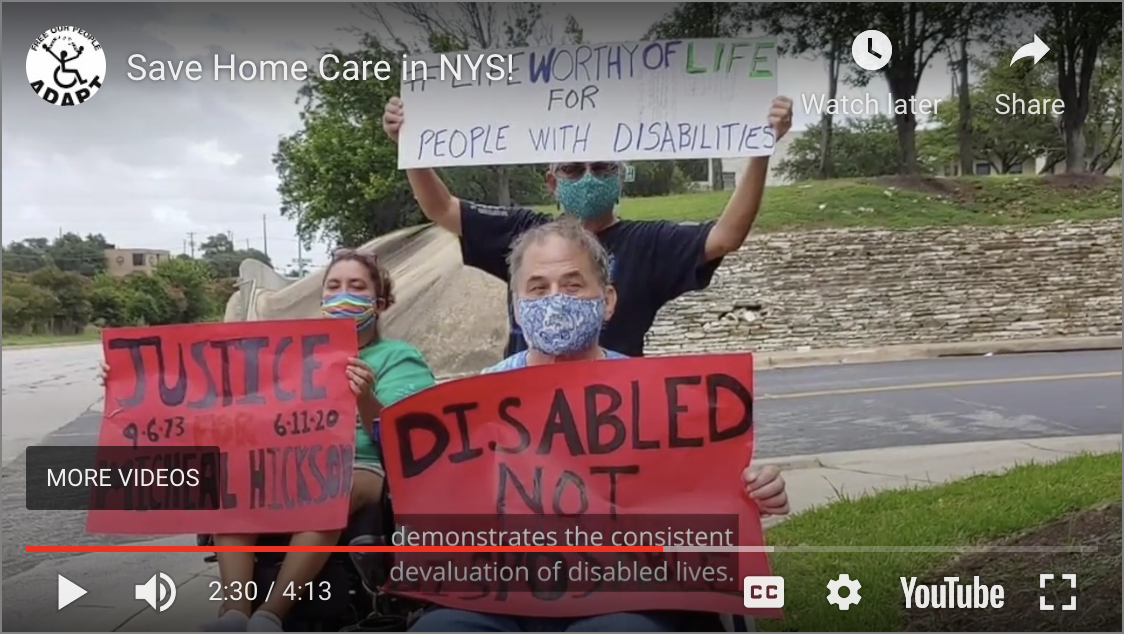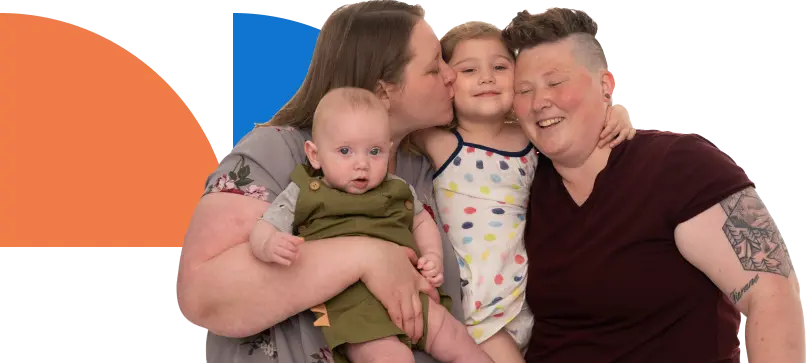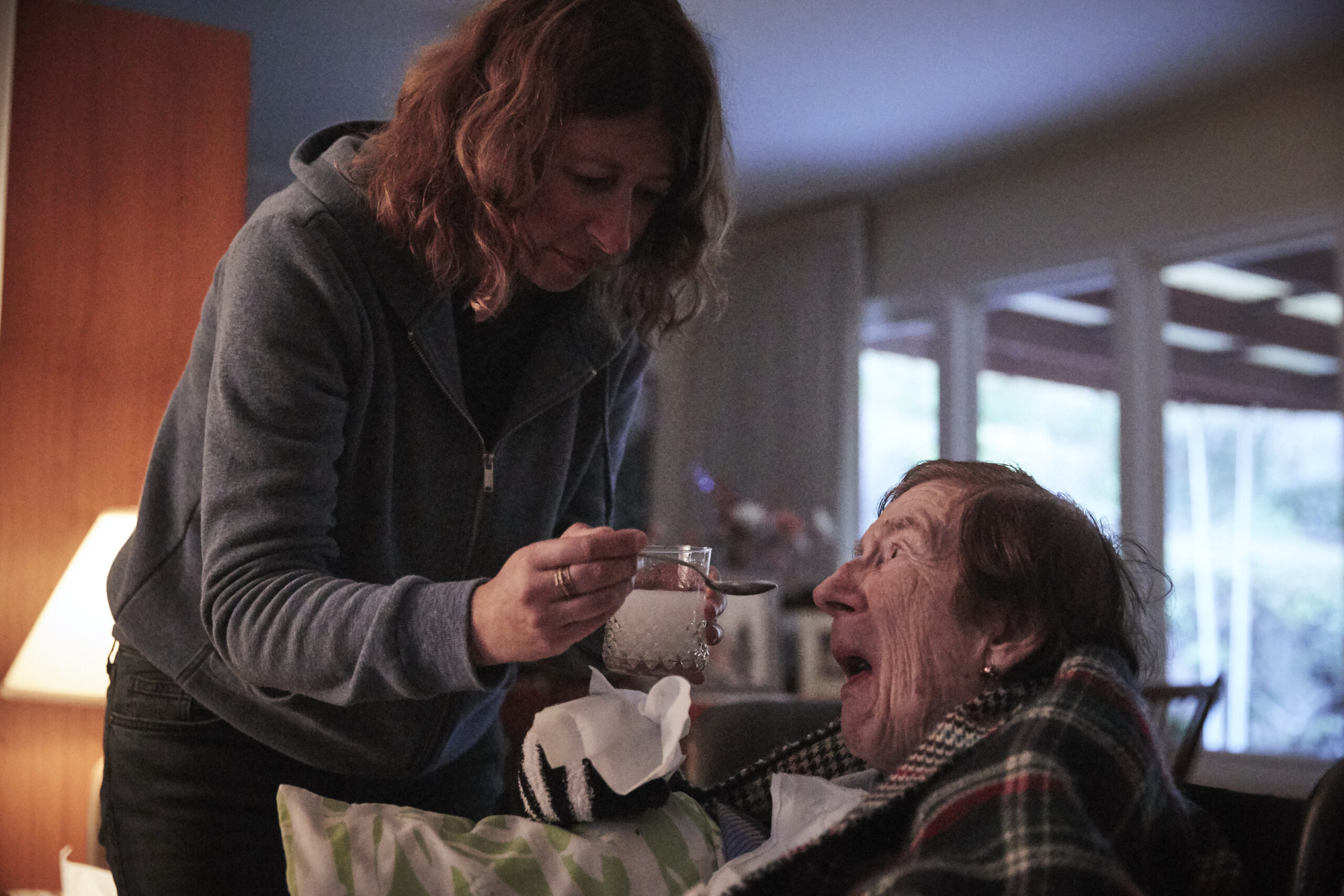
Nationwide, COVID-19 has devastated nursing homes, and nursing homes account for over 40% of COVID-19 deaths across the country. New York’s nursing homes have been hit especially hard, and in recent weeks, a cover-up by the governor’s office of nursing home deaths made national news.
There is a widespread outcry that nursing homes need to be safer for those living and working in them. Home care needs more support and funding so that people with disabilities and seniors don’t have to be placed in these often dangerous and dehumanizing institutions to receive the care they need. It’s become clearer than ever that people need and deserve to have choices when it comes to where they live, age, and receive care.
And yet, a little known piece of legislation in New York could go into effect as soon as April 1st when the state budget is signed that would actually force more people into congregate settings, instead of helping people stay at home and in their communities.
Here’s how it works: Currently, under Medicaid home care programs, you must need assistance with at least one personal care function (also called activities of daily living, or ADLs), like bathing, dressing, or grooming, or need help with nutritional and environmental support services (also called instrumental activities of daily living, or IADLs), like meal preparation and laundry, to qualify for home care. But under the new rules, people who need care will now need help with “physical maneuvering” with at least 3 ADLs to receive the assistance they need at home.
Kathleen Downes, an ADAPT Downstate NY member and social worker, says, “Not everyone needs help with physical maneuvering but that doesn’t mean they don’t need help. If you need anything like supervision, oversight so that you don’t fall, help putting items in reach, unrelated to physically moving yourself, you won’t be able to access it under the new rules.”
Nina Bakoyiannis, an ADAPT Downstate NY activist, shared an example in which someone who needed home care could score 18 points on the new assessment survey, which would put them far over the threshold for nursing home care, but still not qualify for home care under the new rules because they would only need help with 2 ADLs.
Kathleen adds, “They’re making it progressively harder to qualify for home care and easier to be institutionalized. The whole system is slanted to put people in nursing homes which are much more expensive and lower quality. We have to make sure they don’t take away this safeguard, because people are going to get hurt in their homes and then get sent to nursing homes where they’re going to receive lower quality care.”
As the eligibility requirements for home care narrow, the assessments to receive home care are also changing under this new legislation in ways that limit and standardize the kinds of care that are covered, failing to take into account the diverse, complex, and individualized nature of care needs. Currently, eligibility for home care needs is usually performed in the care recipient’s home by a nurse or another clinical professional. But under the new ruling, eligibility will be determined through a more restrictive and opaque assessment.
Says Kathleen, “As far as we know, they are only including seven activities of daily living in the new assessment, which eliminates a lot of nutritional and environmental support functions, and about half of previously listed personal care activities. The assessments also don’t take into account the episodic nature of some impairments: some days you might have more pain than others, some days you can walk and some days that you can’t.”
Nina notes that this assessment tool is, according to the Department of Health, “Proprietary, and they get to choose it and tweak it without the say of legislature or consumers. They are using something that was never supposed to be used to determine eligibility.” And Kathleen underscores that the secretive nature of the assessment is very concerning: “It’s part of our health record. If this is going to be deciding our future, we should be able to see it.”
Kathleen also pointed out that some of the survey questions are downright nonsensical.
“There are some strange exclusions that don’t seem to reflect knowledge or empathy for the fact that disabled people are real people. When scoring for hours and eligibility, [the assessment] specifically says, under assistance for bathing, ‘exclude washing of back and hair.’ So if that’s the only help you need, it doesn’t count. Are you supposed to spend the rest of your life walking around with an unwashed back and hair?”
Apart from absurd exclusions, what especially concerns Kathleen and Nina is that there’s an illusion of choice, but really no choice at all. Kathleen says, “People will say to me all the time, ‘You’re young, you don’t belong in a place like that.’ But older people don’t want to be there either, it’s not like when you get old you stop wanting to be part of the community.”
If this proposed legislation is signed into law, Kathleen says, “People are either going to be left with insufficient access to help and they’re going to have no choice but to be put in the nursing home. At the end of the day, everybody is entitled to make their own choice about the setting they want to be in, but right now it isn’t a true equal choice because the policy makes it so that the nursing home is the only option for you.”
There is also a fear that this assessment may be used to funnel people into nursing homes against their will. Under these new rules, Kathleen says, “The state can arbitrarily say that, with your needs, you are not safe to stay in the community. If you don’t act impaired enough, you’re not disabled enough to get home care, but if you need a lot of help they can say you’re too disabled to stay in the community. They get to decide what safe means. It really puts us between a rock and a hard place.”
If this law passes, it would be devastating for people with disabilities, young and old. So what can you do to make sure this legislation doesn’t pass and ensure that people who need home care can still receive it? ADAPT Downstate NY has worked with Assembly Member Richard Gottfried and State Senator Gustavo Rivera to introduce repeal legislation that will remove these Medicaid changes from the budget. You can read the letter below, and start by signing and sharing the petition demand that your state assembly members and senators to support the repeal legislation.
But we also need to change the way we think about and value the needs of disabled people.
Says Kathleen, “I want to hammer home for non-disabled population that it can and it will affect you some day. If you are lucky enough to live for a long time, you will eventually need long term care. I never want people to feel afraid to feel what it’s like to be me. People with disabilities can have wonderful lives even if they have long-term care. Needing long-term care is not some abstract thing that could never happen to you, it can happen to anyone.”
And Nina adds, “These issues are always present. There is always some threat to our services, always some budget cut. If we really want to address the problem, it’s about no longer putting fires out here and there, it’s about addressing the system that produces the fires. We must create a society where disabled people are valued, where the cost of our services isn’t something the state thinks they can cut back on, and where interdependence is the norm.”
Here’s how to take action:
Send your letter to your state elected officials!
Please visit ADAPT Downstate NY’s website for more information.



